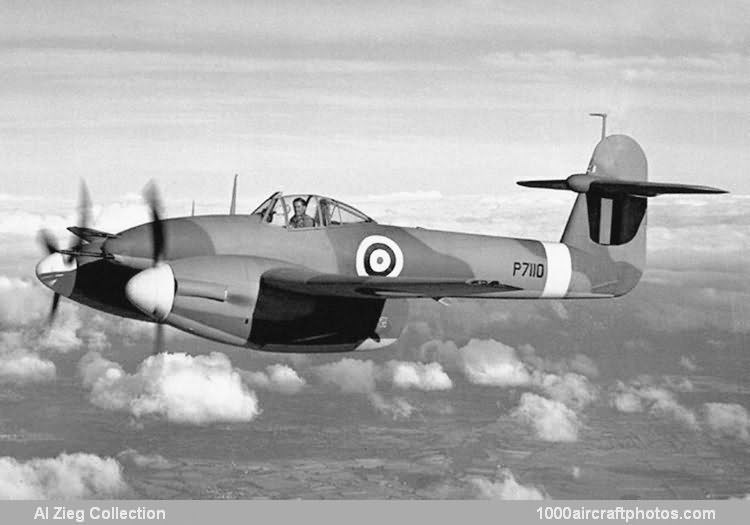The four Hispano Mk.I guns were grouped in the nose, the pilot enjoyed a good all-round view from a fully-enclosed cockpit in line with the wing trailing edge, and radiators were buried in the wing leading edges inboard of the nacelles. Construction was of metal throughout, with flush-riveted stressed skins, a novelty being the use of magnesium rather than aluminum sheet to cover the monocoque fuselage aft of the cockpit.
Two prototypes (s/n L6844, L6845) were ordered by the Air Ministry in February 1937, and the first of these flew on October 11, 1938. Despite delays in development and production of the Peregrine engine, two contracts were placed in 1939, each for 200 fighters as Whirlwind Mk.Is, and the first series aircraft flew in June 1940. In the event, production ended with 114 aircraft built, these serving with only two RAF squadrons (Nos 263 and 137).
Armament problems and changing operational needs curtailed the usefulness of the Whirlwind, which was enhanced in late 1942 by the addition of a pair of wing racks to carry two 250 lb (113 kg) or 500 lb (227 kg) bombs. Operational use of the Westland fighter came to an end in November 1943.
The P7110 in the photo above and in photo 2115 was the 100st production aircraft."
